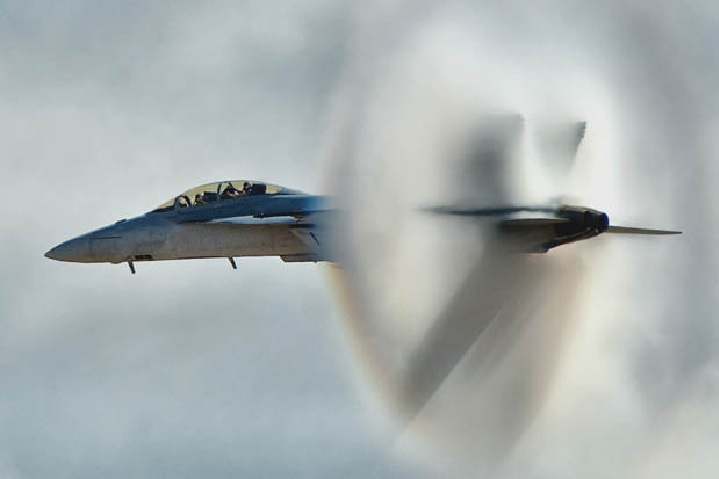Have you ever wondered how a sonic boom would look like? For those who are not familiar with what a sonic boom is, it is an intensely loud sound that occurs from objects that travel faster than the speed of sound itself. An example of this is the loud clap of sound that follows the whiz of a jet that passes by. Pressure waves that are created by the travelling object would pile up on each other thus, creating the thunderclap you hear. It’s an ultimately loud sound that could shatter glass windows and burst people’s ear drums if it were to be in your path, and now, for the first time ever, a group of scientists were able to capture a sonic boom on camera.
These conical shaped sonic booms aren’t restricted to just sound. Pulses of light can also leave those shapes as well. An international team of researchers then decided to make use of developing technology to capture a mach cone on camera.

Source: Imgur
It may sound amazing, but it’s no easy task. The biggest challenge was to “slow down” light itself so as to be able to create a “photonic boom”. The speed of light is at 300,000 km per second or 186,000 miles per second when it is in a vacuum. According to Einstein’s theory of relativity, there is nothing that travels faster than the speed of light in a vacuum. However, it is possible to slow this down by using glass and water. By using varying materials, the research team was able to control the light’s speed.

Source: LiveScience
Jinyan Liang, an optical engineer with Washington University in St. Louis, Missouri, is the lead author. He and his team created a unique channel that is snugly positioned between two plates of silicone rubber and aluminum oxide. The team then fired green laser pulses at 7 picosecond speeds down the tunnel that is filled with dry ice. The fog then slowed down the light and dispersed it, and therefore generating waves which entered the plates.
The team made use of a specific ultrafast camera to record the Mach cone. The ‘streak camera’ system will then collect images in spatial information. The researchers collect hundreds of images that are taken in succession at a trillionth of a second apart and the build up the data. This is done several times so that they are able to verify each take.
The research team decided to use the streak camera to be able to get three views of the same event. One camera would get the sequence, while the other two would record the timing of the events. The secondary cameras allowed the researcher to put the pieces together bit by bit. According to Liang, this process is “[putting] different bar codes on each individual image, so that even if during the data acquisition they are all mixed together, we can sort them out.”
Article Sources:
Science Mag
Live Science












